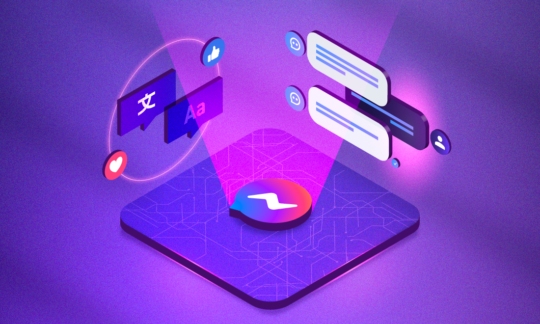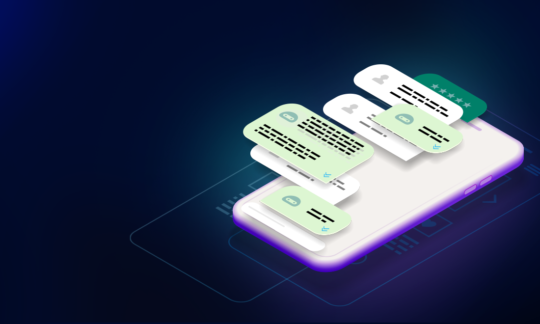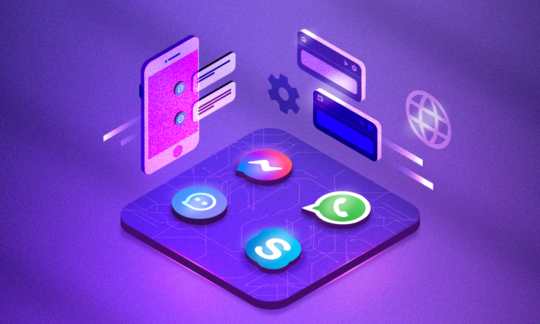Empowered customer service – chatbots and voicebots for utility providers
Chatbots, software applications combining artificial intelligence and natural language processing to answer questions and provide support to humans, are revolutionizing customer service across several industries. Chatbots, and the related technology of voicebots (essentially chatbots dedicated to receiving spoken language through mobile devices, smart speakers or messaging apps) allow companies to automate customer inquiries, reduce customer service costs, and support their customer base with 24/7 availability.
Utility providers (also referred to as utility companies or public utilities) provide the essential services that consumers require – electricity, gas, and water. Utilities are an integral part of modern society, with a collective customer base that includes nearly every household. The customer support responsibility owned by utilities is massive, from supporting billing inquiries, setting up new services, and providing uninterrupted service levels.
In this post, we’ll take a look at the many ways utility providers can use chatbots and voicebots to provide more effective customer service.
Table of contents
Use cases for chatbots for utilities
A wide range of common service needs for utility customers can be assisted by transactional chatbots or voicebots. These include:
- Account details: viewing a bill or checking an account balance
- Online access: resetting a password
- Payments: making a payment online, or reviewing previous payments
- Submitting information: providing an electricity meter reading
Surfacing client account details only scratches the surface of the capabilities chatbots can offer to utility companies. Some additional use cases include:
- Service outage support: Chatbots can access up-to-the-minute data on service outages and restoration efforts and share this critical information with customers. Similarly, clients can interact with the chatbot to report new service issues or potential hazards such as a gas leak.
- Relocation procedures: According to US census data, the average American can expect to move 11.7 times in their lifetime. A utility chatbot can help retain customers by supporting them with move-related services such as address changes, setting up the new service, and obtaining meter readings during move time to ensure accurate billing.
- Usage, conservation, and optimization: Many consumers don’t realize how easily they can reduce water and energy costs through simple practices or tips. Analyzing their account data, a chatbot could recommend moving certain activities such as running the dishwasher to off-peak hours. It reduces the client’s bill while reducing strain on the energy grid.
- Scheduling service visits: When a service visit is necessary, a chatbot or voicebot can facilitate scheduling the appointment, report on estimated arrival time, and collect customer feedback post-visit.
- Product offers, rebates, or incentives: Most utility customers won’t spend their time scanning the utility’s website for new promotions – a chatbot has a unique opportunity to introduce new promotions (such as smart home energy-saving devices) or rebates while handling service-related inquiries.
- Resolving complaints: Undoubtedly many complaints will be common ones (e.g. service outage), and a chatbot can be trained to handle these appropriately. The utility provider has the added benefit of precise record-keeping and timeline tracking of these complaints – valuable data to ensure regulatory requirements are supported.
While the list above focuses on customer-facing chatbot applications, progressive utility companies are also implementing chatbots for internal employee support. IT Helpdesk tasks and common Human Resources procedures are prime targets for the automated efficiency of chatbots.
Amping up customer support – benefits of chatbots for utilities
A 2020 study by TCS revealed that utilities are accelerating AI investments more aggressively than all but one industry (consumer packaged goods). AI for utilities, often in the form of AI-enabled chatbots, can address some challenges unique to utility providers.
While most companies can reliably predict the rise and fall of customer support demand, utilities can be uniquely challenged by surges in client demand when infrastructure issues impact utility services. Natural disasters such as a hurricane, or rolling brown-outs during peak summer demand, can result in a massive spike of calls to the call center. During these crises, utilities must concurrently address the challenge of rapidly responding with a coordinated effort to restore service, while also dealing with a surge of customer inquiries from those without power.
Chatbots can help with regular day-to-day servicing of customer needs, but their efficiency in such moments of crisis could be a game-changer for a utility’s customer satisfaction ratings. The potential benefits cut across a number of areas:
- Reduced customer handling time: The efficiency of chatbots frees capacity for call center staff to deal with complex client issues rather than routine requests.
- 24/7 support: Utility customers’ peak needs don’t fit with traditional 9-5 business windows. Chatbots ensure customer support is always available.
- Reduced operational costs: Chatbots can significantly reduce call center staffing costs
- Multichannel: Chatbots can be activated in the digital channels that utility customers use the most, whether that’s the web, messenger apps, social media, or voice-activated devices like smart speakers.
- Accurate and consistent responses: Chatbots bring a consistency to client communications that, no matter how much is invested in employee training, cannot be duplicated.
- Customer data and insights: chat transcripts can be a goldmine for customer experience professionals, enabling them to identify and address customer pain points.
- Multi-lingual: Chatbots can be trained to interpret and speak several languages.
Cons or considerations for using chatbots in utility companies
When it comes to customer service, the stakes are high for utility companies, particularly in areas where the regulator imposes service quality standards. Here are some important considerations to keep in mind:
- Customer reluctance to engage: There will undoubtedly be some customers who will say “I just want to speak to a real person.” This type of reluctance to engage with chatbots can affect adoption rates. Consider how to promote the chatbot to your audience, how to suggest or nudge callers to use it, and the conditions that require a switch to a human operator.
- Chatbots are not personal: Chatbots are generally built to pragmatically interact with people to achieve task completion. Skilled customer service agents know that sometimes some extra smooth talking or some random small talk can help soothe a particularly irate customer. Here as well, it’s about considering where an extra human touch might pay off in customer satisfaction.
- Humans don’t complain in consistent ways: Logging, tracking and resolving complaints is often an important requirement for utilities based on regulator guidelines. Special care should be taken in training the chatbot to recognize the many shapes of a complaint, and to explicitly clarify whether the client is initiating a formal complaint.
Chatbot examples in the utility sector
Chatbots are actively employed by several utility companies today. Here are some of the early adopters:
E.ON is one of the largest energy networks and infrastructure operators in Europe, serving over 50 million customers in 15 countries. The utility provider designed chat and voice bots to provide support to customers. The system handles over 100,000 conversations per month, covering about 70% of total demand. Benefits include reduced workload for call reps, increased customer satisfaction, and substantial savings in operational costs.
Chicago-based Exelon, the largest regulated electric utility in the US with 10 million customers, modernized their support approach by introducing a chatbot for more efficient client self-servicing. The initiative resulted in 18% reduced calls, and increased customer satisfaction for support interactions by 10%.
Naturgy is one of the biggest power suppliers in Spain, offering electricity as well as natural gas. In 2019 Naturgy implemented chatbot Pepe. Pepe handles over 400 questions a day, completing 92.5% without human intervention. Pepe is trained to handle 358 topics in several areas including billing, prices, meter readings, and maintenance.
In some countries like Brazil, the messaging app WhatsApp is the preferred method for people to communicate with each other, but also increasingly with brands. Brazilian utility company Neoenergia (part of Iberdrola) integrated their chatbots with WhatsApp to more easily reach and assist customers. Clients can access their account, make payments, assess their power usage, and receive notifications for service outages.
Similarly, Galp, one of Portugal’s largest gas and energy companies, integrated their chatbot with WhatsApp in order to stay more closely connected to the company’s employee base spread over 11 countries.
Chatbots for utilities – transforming customer engagement
Ready to build your own energy bot, utility bot, or electricity bot? SentiOne brings conversational AI chatbots and voicebots to life through our virtual assistant platform. Revolutionize your customer support capabilities, while reducing costs and accelerating response time. The SentiOne platform enables utility customers to design and adapt chatbot dialogue through a simple drag-and-drop interface. SentiOne’s chatbot capabilities have achieved 94% intent accuracy recognition due to a natural language engine that comes pre-trained with more than 30 billion online conversations. To learn more, visit the SentiOne website or book a demo for a first-hand look.



